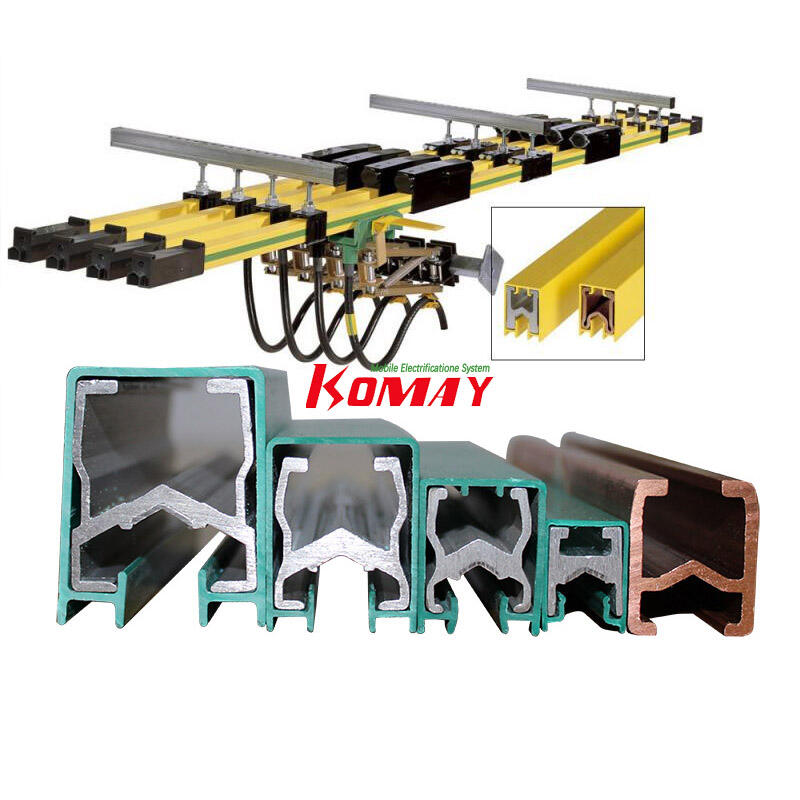Have you ever watched a bridge crane operate from KOMAY? The contraption to move really heavy things from one place to another is something large and moves off its control. You may have observed that they typically draw their electricity through wires, and this is because of a technology/system known as Power Transmission System. Powering These Big Machines… But is there a better way? This is all part of the concept surrounding a single-pole sliding contact line and it could revolutionize how bridge cranes work in the future.

Two-pole sliding contact line
A single-pole sliding contact line is a new approach to supplying power for bridge cranes like crane conductor rail. Think of a long pole that extends across the top side of the crane. There is a boom, and this stick creates it possible for the crane to become wheeled around when still getting an electric powered give therefore it can function. Aside from this a tiny metal part is hanging on the side of the crane. What is basically happens, this metal portion slides to sideways on the rod by taking power electricity. This design is useful as it gives the crane the ability to move freely within its operational envelope without being tied and relegated only to a single source of power. That is like a really long extension cord that lets you walk all over the room, without getting tripped up by those wires.
Why is this Idea Good?
You are probably wondering: Does it make sense to use a single pole sliding contact line for bridge cranes? So there are several cause due to which this system seems very beneficial. For one, the cables will not become a tangled mess while moving across which can cause them to bind up. This is another great feature, as loose wires can cause accidents or prevent the crane from working at all just like crane busbar. One tall pole instead of a series of wires also makes the system easier for utility companies to manage and repair when something goes wrong. Everything is easier to take care of, as heavy machinery should be.
What are the Problems?
However, use a single-pole sliding contact line, but also their shortcomings for bridge crane. The crane must be in a position where the pole can reach it, so if little ways up from you is not far enough that will begin to become an issue. The crane like crane conductor bar itself will not be able to do its job in those places if there are portions that the pole cannot reach. This limitation is a restriction that can cause the operator to suffer in carrying larger size materials even for short distances. The metal part that slides up and down the pole can also experience wear over time. This may mean it could need more repairs and maintenance to keep running, which will waste time and money. Tips for Minimising Wear and TearMachine maintenance is important, and wear-and-tear can make it difficult.
What is the Future?
And the single-pole sliding contact line is going to be better way for next generation of power supply also when bridge cranes. It is hard to know for sure. There are some pros to this system, but there a few cons as well. This makes it a viable option but one that still needs to be thoroughly thought through by engineers and crane operators alike in order to arrive as an educated conclusion whether or not this type of method meets their requirements. The idea of what the future could bring in terms of how bridge cranes work and better flow is an exciting thought. It means that these sort of innovations, can result in safer and efficient ways to work.

 EN
EN
 AR
AR
 HR
HR
 CS
CS
 DA
DA
 NL
NL
 FI
FI
 FR
FR
 DE
DE
 EL
EL
 HI
HI
 IT
IT
 JA
JA
 KO
KO
 NO
NO
 PL
PL
 PT
PT
 RO
RO
 RU
RU
 ES
ES
 SV
SV
 TL
TL
 IW
IW
 ID
ID
 LV
LV
 LT
LT
 SR
SR
 SK
SK
 UK
UK
 VI
VI
 SQ
SQ
 HU
HU
 TH
TH
 TR
TR
 AF
AF
 MS
MS
 BN
BN
 MN
MN
 KK
KK
 KY
KY